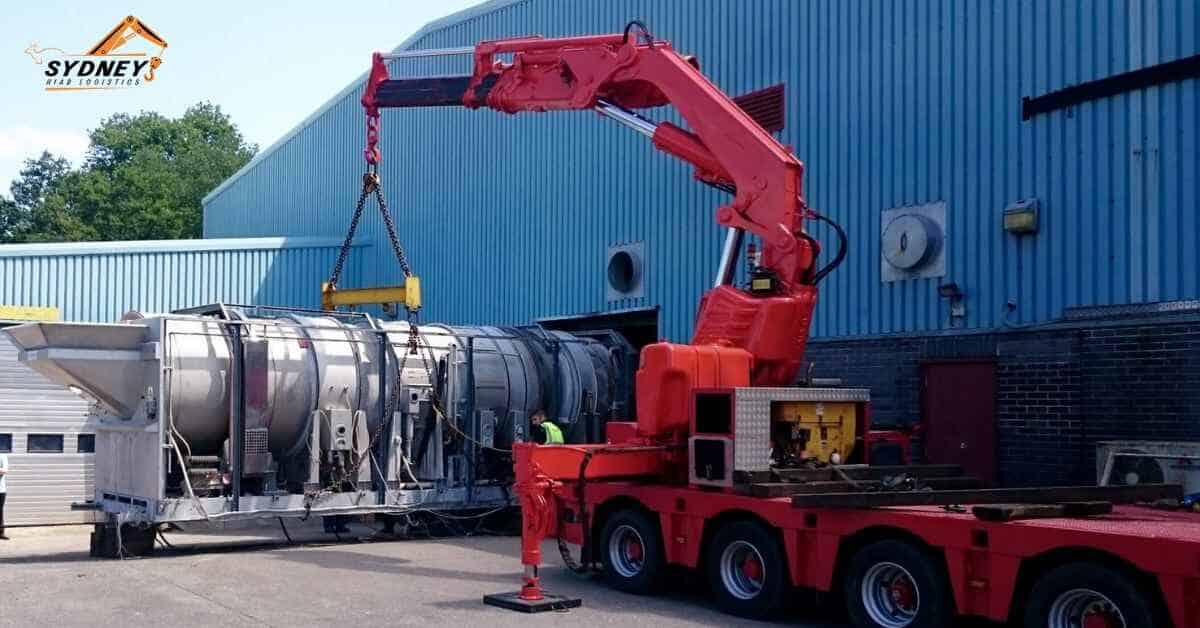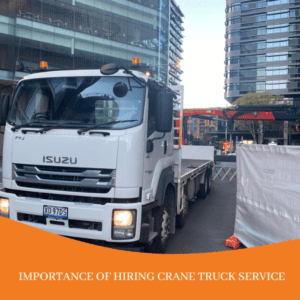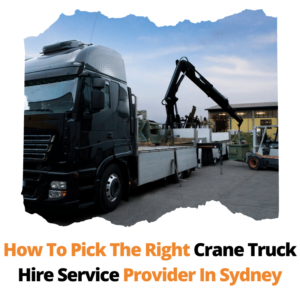Transporting heavy machinery is a critical task that requires not just the right equipment but also careful planning, skilled operators, and stringent safety measures. In Ingleburn, where industrial operations are commonplace, the use of Hiab trucks for machine transport has become increasingly popular due to their versatility and efficiency. This blog will delve into the top tips for ensuring safe machine transport in Ingleburn using a Hiab truck.
1. Conduct a Thorough Site Assessment
i) Understanding the Terrain:
Before beginning any transport operation, it’s crucial to conduct a thorough assessment of the loading and unloading sites. Examine the terrain to ensure that it’s suitable for the Hiab truck to operate safely. Uneven ground, loose soil, or restricted spaces can pose challenges and should be addressed beforehand.
ii) Identify Potential Hazards:
During the site assessment, identify any potential hazards such as overhead power lines, nearby structures, or other obstacles that could interfere with the crane’s operation. Addressing these hazards in advance will help prevent accidents and ensure a smooth transport process.
iii) Check Access Routes:
Ensure that the access routes to the site are clear and can accommodate the Hiab truck. This includes checking the width of entry points, the strength of bridges or ramps, and any height restrictions that might affect the truck’s passage. Clear access routes are essential for safe and efficient operation.
2. Choose the Right Hiab Truck for the Job
i) Evaluate the Load Requirements:
Hiab trucks come in various sizes and lifting capacities, so it’s essential to choose one that matches the weight and dimensions of the machinery being transported. Overloading a Hiab truck can lead to accidents and damage to both the truck and the machinery. Consult with the Hiab truck provider to select the appropriate model for your needs.
ii) Consider Reach & Maneuverability:
In addition to lifting capacity, consider the reach and maneuverability of the Hiab truck. Some jobs may require the crane to extend over obstacles or operate in confined spaces, so it’s important to select a truck that can handle these specific challenges.
iii) Inspect the Equipment:
Before starting the transport, inspect the Hiab truck to ensure that it is in good working condition. Check the hydraulic systems, crane controls, and safety features such as stabilizers and overload protection. A well-maintained truck is less likely to experience mechanical failures during the operation.
3. Plan the Transport Route Carefully
i) Map Out the Route:
Planning the transport route is a critical step in ensuring safety. Choose the most direct and safe route to the destination, avoiding roads with weight restrictions, low bridges, or tight corners that might pose a challenge for the Hiab truck.
ii) Consider Traffic Conditions:
Transporting heavy machinery often requires navigating through busy roads. Plan the transport during times when traffic is lighter, and consider any local regulations or permits required for moving oversized loads. This will help minimise delays and reduce the risk of accidents.
iii) Prepare for Unloading:
Plan the unloading process with the same care as the loading. Ensure that the destination site is ready to receive the machinery and that there are clear instructions for where and how the equipment should be placed. Having a well-thought-out unloading plan will help avoid last-minute issues and ensure that the machinery is positioned correctly.
4. Secure the Load Properly
I) Use Appropriate Restraints:
Securing the machinery on the Hiab truck is one of the most important aspects of safe transport. Use appropriate restraints such as chains, straps, or lashing to hold the machinery in place. Make sure that the restraints are rated for the weight of the load and that they are applied correctly to prevent shifting during transit.
ii) Double-Check Fastenings:
Before the truck sets off, double-check all fastenings to ensure that the load is secure. Even a small movement of the load during transport can lead to instability and increase the risk of accidents. It’s better to spend a little extra time checking the load than to face the consequences of an unsecured transport.
iii) Monitor the Load During Transit:
If possible, monitor the load during transit to ensure that it remains secure. Some Hiab trucks are equipped with cameras or sensors that allow operators to keep an eye on the load as it’s being transported. Regular checks during the journey can help identify any issues before they become serious problems.
5. Ensure Proper Training and Communication
i) Qualified Operators Only:
Operating a Hiab truck requires specialised skills and training. Ensure that only qualified operators are responsible for the crane and transport operations. Operators should be familiar with the specific model of Hiab truck being used and understand all safety protocols associated with the machinery transport.
ii) Clear Communication:
Communication between all parties involved in the transport is essential. This includes the operator, ground crew, and any other personnel on-site. Use clear signals or radio communication to coordinate movements and ensure that everyone is aware of the transport plan.
iii) Conduct a Safety Briefing:
Before beginning the transport, conduct a safety briefing with all team members. Review the transport plan, identify potential hazards, and discuss the roles and responsibilities of each person involved. A well-informed team is better equipped to handle unexpected situations and ensure a safe transport process.
6. Prioritize Safety at All Times
i) Use Stabilizers & Safety Features:
Hiab trucks are equipped with stabilizers and other safety features that help prevent accidents. Always use these stabilizers when operating the crane, especially on uneven terrain. Make sure that the truck is properly balanced before lifting any heavy machinery.
ii) Follow Weight Limits:
Adhering to the weight limits of the Hiab truck is non-negotiable. Overloading the crane can lead to equipment failure and serious accidents. If the machinery exceeds the truck’s lifting capacity, consider using a different model or making multiple trips to transport the load safely.
iii) Regular Maintenance Checks:
Regular maintenance of the Hiab truck is crucial for safe operation. Ensure that the truck is serviced regularly, and conduct pre- and post-transport inspections to identify any issues that need attention. Preventative maintenance helps avoid breakdowns and ensures that the truck operates at peak performance.
7. Engage Professional Hiab Truck Services
i) Work with Experienced Providers:
If you’re not familiar with Hiab truck operations, it’s advisable to work with a professional hiab truck service. Experienced providers have the knowledge, equipment, and expertise to handle complex machine transport tasks safely and efficiently.
ii) Request References and Reviews:
When selecting a Hiab truck service provider, ask for references and check online reviews. A reputable provider will have a track record of successful transports and satisfied customers. Don’t hesitate to ask questions about their experience with similar loads and the safety measures they have in place.
iii) Consider Insurance Coverage:
Ensure that the transport provider has adequate insurance coverage in case of accidents or damage during the transport. This provides peace of mind knowing that any unforeseen issues will be covered, and your machinery will be protected.
Conclusion
Machine Transport in Ingleburn with a Hiab truck is a task that requires careful planning, the right equipment, and a commitment to safety. By following these top tips, you can ensure that your machine transport operation is conducted efficiently and safely, minimising the risk of accidents and delays. Whether you’re moving machinery for construction, industrial, or other purposes, the use of a Hiab truck can significantly enhance the safety and success of your transport operations.




